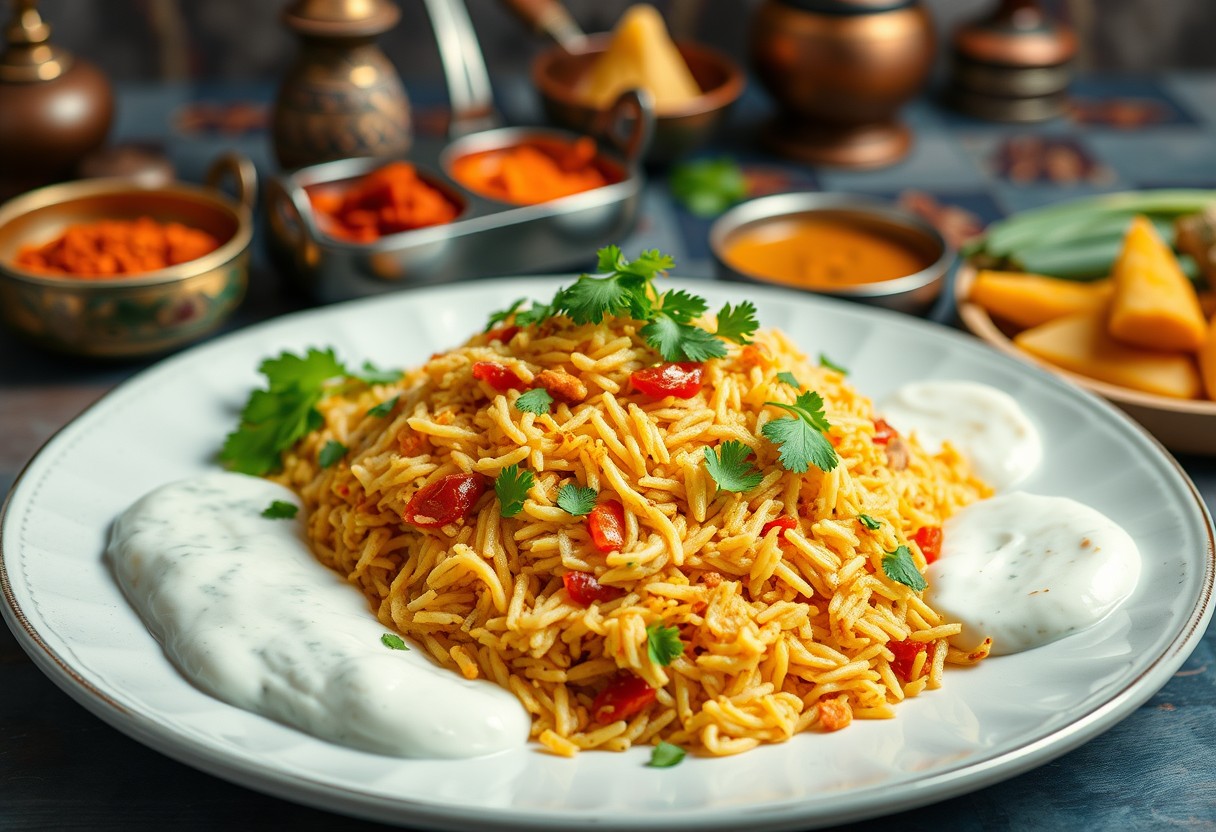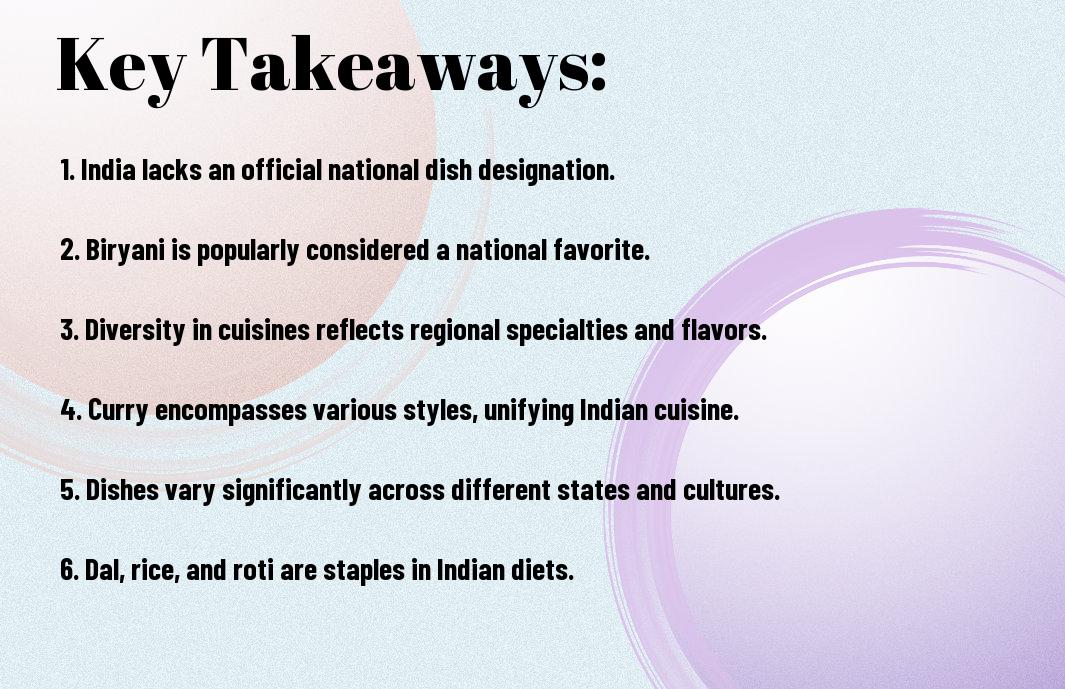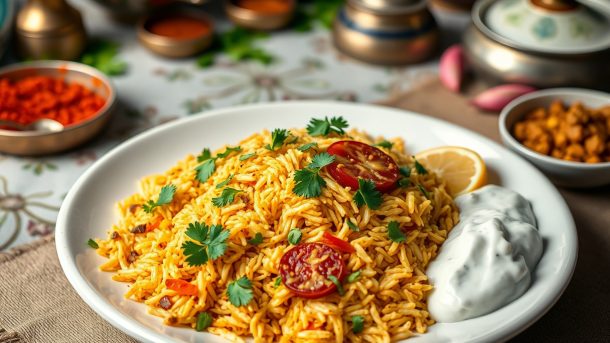Just as every country showcases its unique culture through food, you may wonder what dish represents the rich culinary heritage of India. While India doesn’t officially designate a single national dish, numerous contenders, including biryani, khichdi, and dosa, reflect the country’s diverse palette. This post will guide you through the popular choices and their significance, helping you to appreciate what makes Indian cuisine an integral part of its identity.
Key Takeaways:
- No Official National Dish: India does not have an officially designated national dish, reflecting its rich diversity in cuisine.
- Popular Choices: Dishes like dal chawal, biryani, and roti are often cited as favorites among different regions.
- Cultural Significance: The lack of a national dish highlights India’s various regional cuisines and the importance of local ingredients and traditions.
Historical Background
For centuries, India has been a melting pot of various cultures, and this rich history has significantly influenced what you may consider the national dish. The evolution of Indian cuisine is a reflection of the country’s diverse past, with a myriad of influences stemming from various invaders, traders, and travelers. Each group introduced their culinary practices, ingredients, and flavors, which merged with local traditions to create a unique culinary landscape that continues to evolve.
Evolution of Indian Cuisine
For you to fully appreciate India’s national dish, it’s necessary to understand how Indian cuisine has transformed over the centuries. From ancient times, spice trade routes played a critical role in bringing diverse ingredients and cooking techniques to the subcontinent. The amalgamation of various regional influences led to the development of distinct culinary styles, making Indian food a complex tapestry of flavors and traditions.
Influence of Regional Flavors
Historical developments have given rise to a fascinating tapestry of regional flavors that define Indian cuisine today. The diverse geography, climate, and culture across India have led you to discover a wide variety of tastes and ingredients. Each state boasts its own specialties; for instance, the coastal regions offer an abundance of seafood, while the northern areas are known for their rich gravies and bread. This diversity in ingredients and preparation methods has influenced many dishes commonly associated with India’s culinary identity.
Flavors from various regions harmoniously coexist, creating a vibrant culinary experience that captivates your senses. The use of spices is not only about taste but also reflects local customs and traditions, enhancing the authenticity of each dish. Whether it’s the fiery heat of South Indian curry or the fragrant aroma of North Indian biryani, these regional influences combine to form a rich, intricate cuisine that tells the story of India’s diverse heritage and evolution. You can sense each region’s history and culture through the remarkable flavors showcased in the nation’s beloved dishes.
Popular Dishes and Their Significance
Some of the most famous dishes reflect India’s rich culinary heritage and cultural diversity. These dishes are more than just sustenance; they embody the traditions, rituals, and flavors of the regions they come from. By exploring each of these dishes, you can gain a deeper understanding of India’s unique gastronomy and the significance it holds for its people.
Biryani: A Culinary Icon
Culinary enthusiasts around the world recognize Biryani as a fragrant and flavorful rice dish that boasts an array of spices, meats, and sometimes vegetables. Each region in India has its own signature version, from Hyderabadi to Kolkata, making it a beloved choice for celebrations and everyday meals alike.
Daal and Rice: The Comfort Food
Any Indian meal feels incomplete without Daal and Rice. This simple yet nourishing combination serves as the backbone of countless households across the country, offering warmth and comfort. It provides not only sustenance but also a sense of home, bringing families together at the dining table.
Biryani is often seen as a festive dish, abundant and luxurious, while Daal and Rice is cherished for its simplicity and health benefits. Its ease of preparation makes it a staple that you will often find in roadside dhabas or bustling homes. When you enjoy this dish, you partake in a culinary tradition that prioritizes nourishment and communal bonding.
Curry: A Diverse Staple
One cannot discuss Indian cuisine without mentioning curry, a category that encompasses a wide variety of flavorful dishes. Each state has its own unique take, incorporating local ingredients and spices that reflect their cultural influences. Curries range from rich and creamy to tangy and spicy, catering to every palate.
Significance extends beyond flavor; curry often represents hospitality and warmth, embodying the spirit of Indian cooking. You’ll find it served at celebrations, gatherings, and everyday meals, symbolizing community and togetherness. Each dish tells a story of heritage, unity, and the love poured into the meals that nourish both the body and spirit.

The Debate on India’s National Dish
Now, when it comes to identifying India’s national dish, the conversation often stirs emotions and opinions across the culinary landscape. As a diverse nation with a myriad of regional flavors, you might find it intriguing to explore the various dishes that have been proposed as candidates. From biryani to dosa, each region touts its own culinary pride. For a closer look, check out the Top 7 National Food of India, which highlights some of the most popular contenders.
Regional Variations
On one hand, India’s regional diversity offers a rich tapestry of culinary practices that make it challenging to pinpoint a single national dish. Different states pride themselves on unique ingredients, methods of cooking, and cultural traditions, resulting in endless variations of similar dishes. For example, while you might find a spicy paneer dish in Punjab, its counterpart in the South could be a milder, coconut-based version, showing how versatile Indian cuisine is.
National Identity and Cuisine
Cuisine plays an imperative role in shaping national identity. You may find that the flavors and dishes you grew up with are intricately linked to your cultural heritage. Understanding this, people often see specific foods as representations of their cultural roots—affecting how they perceive what could be considered a national dish. The essence of Indian cuisine lies in its ability to bring together multiple cultures under a single culinary umbrella.
To encapsulate India’s national identity through cuisine, think about how certain dishes transcend regional boundaries to become emblematic of the nation. Your personal experience with food is shaped by factors like family recipes, festivals, and communal gatherings, all of which add to the narrative of what it means to be Indian. This creates an emotional landscape where food is not just sustenance but a reflection of your heritage and shared experiences.
Perspectives from Chefs and Food Critics
Food professionals also play a significant role in the national dish debate, offering you insights into the ever-evolving culinary scene. Their perspectives reveal how trends, innovations, and international influences can shift the conversation about what should represent the country on a global stage.
For instance, celebrated chefs might argue that a modern interpretation of traditional foods can redefine national cuisine. They often highlight sustainability, seasonality, and regional ingredients, guiding you through a reimagined landscape of Indian cooking. As culinary traditions grow and change, your understanding of what constitutes the national dish is likely to evolve, shaped by the voices of those who create and critique our food.

Summing up
With these considerations, you can appreciate that India’s national dish, Khichdi, embodies the country’s rich cultural tapestry and emphasizes simplicity and health. This comforting dish, made primarily from rice and lentils, reflects the diverse yet unifying culinary traditions across India. To learn how to prepare this staple dish and understand its significance in Indian cuisine, visit Introducing Khichdi: India’s National Dish? – Buttered Veg.
FAQ
Q: What is India’s national dish?
A: India does not have an officially designated national dish. However, many people consider ‘Khichdi’ to be a representative dish due to its widespread popularity and cultural significance across various regions of the country.
Q: Why is Khichdi often regarded as India’s national dish?
A: Khichdi is a simple and nutritious dish made from rice and lentils, often spiced and cooked together. It is cherished for its comforting qualities, ease of preparation, and versatility. Families across India enjoy it, making it a unifying meal across various cultures and communities.
Q: Are there other dishes that are considered national dishes of India?
A: While Khichdi is widely recognized, other dishes like Biryani and Dosa are also prominent and celebrated in different regions. The diversity of India’s culinary landscape means that various food items resonate deeply with different communities, making it difficult to designate a single national dish.
Q: What are the primary ingredients in Khichdi?
A: The primary ingredients of Khichdi include rice, lentils (typically yellow split peas or moong dal), turmeric, and salt. It can also be customized with various vegetables and tempering spices for added flavor, such as cumin seeds and ghee.
Q: How has the perception of India’s national dish evolved over time?
A: The perception of a national dish has evolved with changing culinary trends and globalization. While traditional dishes like Khichdi remain beloved, international cuisine has gained popularity, leading to diverse representations of Indian food. As such, the concept of a national dish may vary among people and is often influenced by personal taste and regional preferences.


